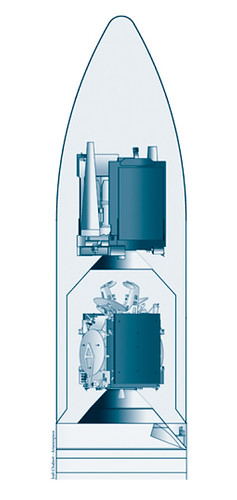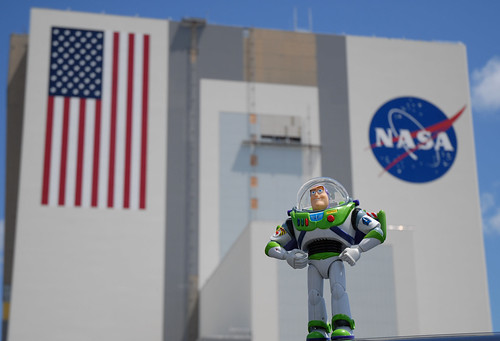
Gasoline prices don’t have much affect on hydrazine, the primary fuel used for spacecraft propulsion. Demand for ethanol has had a remarkable affect on corn prices (up 21%), however, with far-reaching implications on chemical processes that use it during fermentation. But there is new research showing a promising reduction in cost.
Doesn’t have much direct affect on the cost to design, build, launch and operate a communications satellite. But, as with other markets, pricing is based on supply and demand. With the recent change in ownership of International Launch Services, there could be changes afoot. When United Launch Alliance was formed, most of their launch manifest was taken up by the U.S. Air Force, leaving the commercial market scrambling for alternatives.
Good thing Arianespace is moving right along — their next launch is at the end of next week, only 3 weeks after their last (de continuer d’avancer).We blogged about the controversy surrounding the Protostar-1 satellite last month, which naturally turned up again during CommunicAsia last week, via Telecom TV:
Interviewed at the Communicasia 2008 summit in Singapore yesterdaym by our sister publication Commsday, the president of ProtoStar Asia, Dr Eui K. Koh said that while co-ordination issues with the two other birds remain a problem, the company has no plans to delay the launch of its first satellite.
“We are doing it [co-ordination] diligently. These things take time,” Dr Koh said. “The co-ordination will continue after the launch. As a satellite operator, you have to respect your customers, as well as the customers of other satellite operators.”
According to Mr. Koh, the company has had several meetings with the owners of the two adjacent satellites and will continue to have negotiate going forward.
ProtoStar One will be launched onboard an Ariane 5 ECA heavy-lift launcher version from Arianespace. The satellite will feature a C-band foot- print over most of South East Asia, India and the Middle East as well as two Ku-band beams covering India and an area stretching from Singapore northward to the southern border of China.
In an earlier media report, it was reported that ProtoStar has come under fire from rival operators because it did not co-ordinate with the industry to avoid possible interference on nearby satellites before finalising its launch plans. The Chinese government’s Ministry of Information and Industry has reportedly protested about the launch, as has AsiaSat.
According to industry sources, the situation is further complicated because ProtoStar has already signed up a customer in India and has a deadline and schedule for the delivery of services.
Well, it looks like we’re in for a show for the 4th of July:
Arianespace has taken delivery of the fourth Ariane 5 in 2008, maintaining its accelerated flight pace during the busiest year of commercial mission activity for this workhorse launch vehicle.
The handover occurred with Ariane 5’s transfer from the Launcher Integration Building at Europe’s Spaceport – where its build-up was performed under responsibility of prime contractor EADS Astrium, to the Final Assembly Building – where Arianespace will oversee integration of the mission’s ProtoStar I and BADR-6 payloads.
In its trademark dual-passenger configuration, the heavy-lift Ariane 5 ECA will carry ProtoStar I in the upper payload position, with BADR-6 riding below it inside the SLYDA 5 dispenser system. Liftoff is scheduled for an evening launch window on July 4.
ProtoStar I is the lead satellite in a fleet of relay platforms that Asia’s ProtoStar plans to launch for advanced satellite television services and powerful two-way broadband communications access. Built by Space Systems Loral, the spacecraft was designed to meet the needs of both emerging and existing direct-to-home (DTH) operators in Asia, as well as other broadband communication requirements in the region.
The BADR-6 spacecraft was built jointly by EADS Astrium and Alcatel Alenia Space, and will be used for video broadcasting services over the Middle East and North Africa regions. To be operated by Saudi Arabia-based Arabsat, BADR-6 carries a mixed payload of 24 C-band and 20 Ku-band transponders, and is designed for a lifetime of about 15 years. The spacecraft will be located at Arabsat’s 26 deg. E geostationary orbital position.















